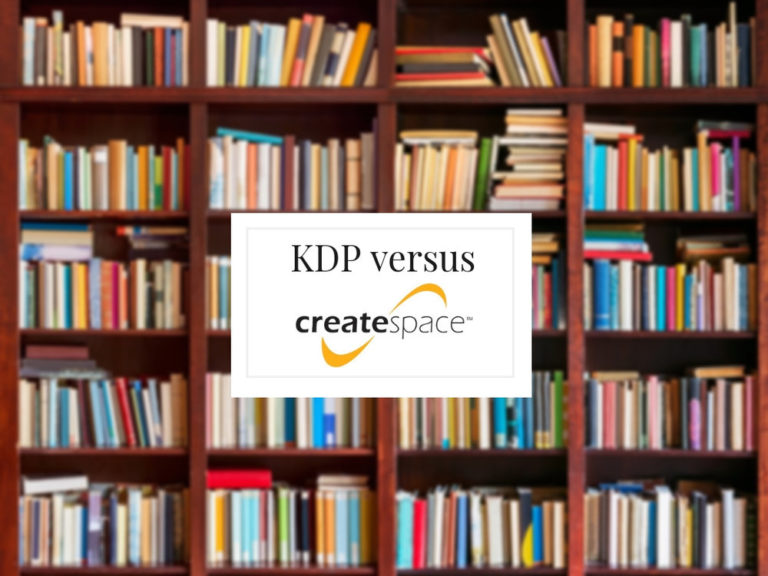While you may have heard whispers for much of 2018, at the end of August CreateSpace and KDP Print officially merged into one self-publishing division of Amazon.
The self-publishing process comes with its fair share of challenges — and learning how to use various platforms to enhance your book’s chances of success it not a small one. For this reason, the change left many indie authors anxious at the prospect of getting acquainted with a new tool.
And yet, now that it’s been about four months since CreateSpace was officially absorbed, you might still be wondering: what’s the difference? That’s why we’re here to give you the highlights: the main things indie authors should be aware have changed — and what has stayed the same.
What has not changed?
Before we get into the differences between CreateSpace and KDP Print, let’s cover what’s unchanged.
- Books are still available for sale, still earning royalties. Any books that you previously published with CreateSpace will still be listed on Amazon, with no changes to your sales numbers or royalties. Learn more here.
- Printing facilities and expected delivery times. Because KDP Print is using the same facilities, there should be no change to the quality of any print-on-demand books you order.
- International Standard Book Number. CreateSpace was quite flexible when it comes to ISBNs, and so is KDP Print: authors can choose to use their own pre-purchased ISBN, buy a discounted Bowker ISBN via KDP Print, or obtain a free ISBN with KDP Print listed as the imprint.
- Distribution fees. Authors still have the following options: distribute via Amazon only with a fee of 40% or expanded distribution to stores other than Amazon with a fee of 60%. Learn more here.
- Book cover and interior design tools. The Word templates and Cover Creator tool offered by CreateSpace will still be available on KDP Print.
What has changed?
Alright, now let’s get to the big ticket items: what are the changes that indie authors should be aware of?
- Printing fees. These are only changing for the following situations: 1) If you are printing a book with less than 100 pages in the UK, KDP Print will cost you ever so slightly less than it did with CreateSpace. 2) If you are printing a book with 101-108 pages in the UK, it will cost just slightly more. 3) If you are printing a book with less than 108 pages in Europe, there will be a slight increase in fees. Learn more here.
- Author payment schedule. With CreateSpace, authors would receive royalties 30 days after the month they were earned in (for example, if you earned royalties at the start of October, you would not receive them until December 1st.) With KDP Print, it is 60 days — so you would instead be paid in January.
- Expanded distribution options. While CreateSpace allowed you to opt out of selling via Amazon with expanded distribution, KDP Print does not provide this option. While this is a new limitation, it is unlikely to negatively impact a large number of indie authors — as the majority do sell on Amazon, and will likely do so via KDP Print. Learn more here.
- International distribution. This is remaining largely unchanged, save for the fact that authors can now distribute to Amazon Japan.
- Local printing facilities for European customers. With KDP Print, books will now be printed and shipped locally instead of from the United States.
- Pre-release copies. If you want to order a proof of your book for pre-release purposes, it will now come with a mark stating that the book isn’t for resale.
- Updated books. Previously, if you uploaded an updated version of your book, you would lose the old listing — and the reviews and sales figures that went with it. This is no longer the case: when you upload a new version, the information attached to the listing of that book will remain. Learn more here.
- Amazon advertising. If you’ve previously enjoyed using Amazon advertising for ebooks, you will now also be able to purchase it for print books.
- Integrated sales dashboard. While CreateSpace offered authors separate publishing and accounting dashboards, these functions are now integrated into one central hub on KDP Print.
What to do now?
Now that you know the key differences between Createspace and KDP Print, it’s time to determine if there are any changes you need to make.
And the answer is probably: not really.
For the most part, the status quo has remain unchanged, as books published through CreateSpace will have been automatically transferred to KDP Print. If anything went awry during the process, you should have received an email alerting you.
Here’s the main thing we suggest you keep in mind
If you’re looking to sell your book beyond Amazon via expanded distribution, you may want to consider using IngramSpark — and continuing to use KDP Print for Amazon only. This is because IngramSpark provides authors with direct access to the largest variety of retailers and wholesale networks.
Finally, if the change has you feeling overwhelmed at the prospect of learning yet another platform, you can breathe a sigh of relief. The small learning curve debut authors enjoyed with CreateSpace has carried over to KDP Print — and if anything, their integrated publishing and sales tools has made it even easier to use.
***
Arielle Contreras is a writer with Reedsy, the publishing network that connects authors with the industry’s best editors, designers, and book marketers.
